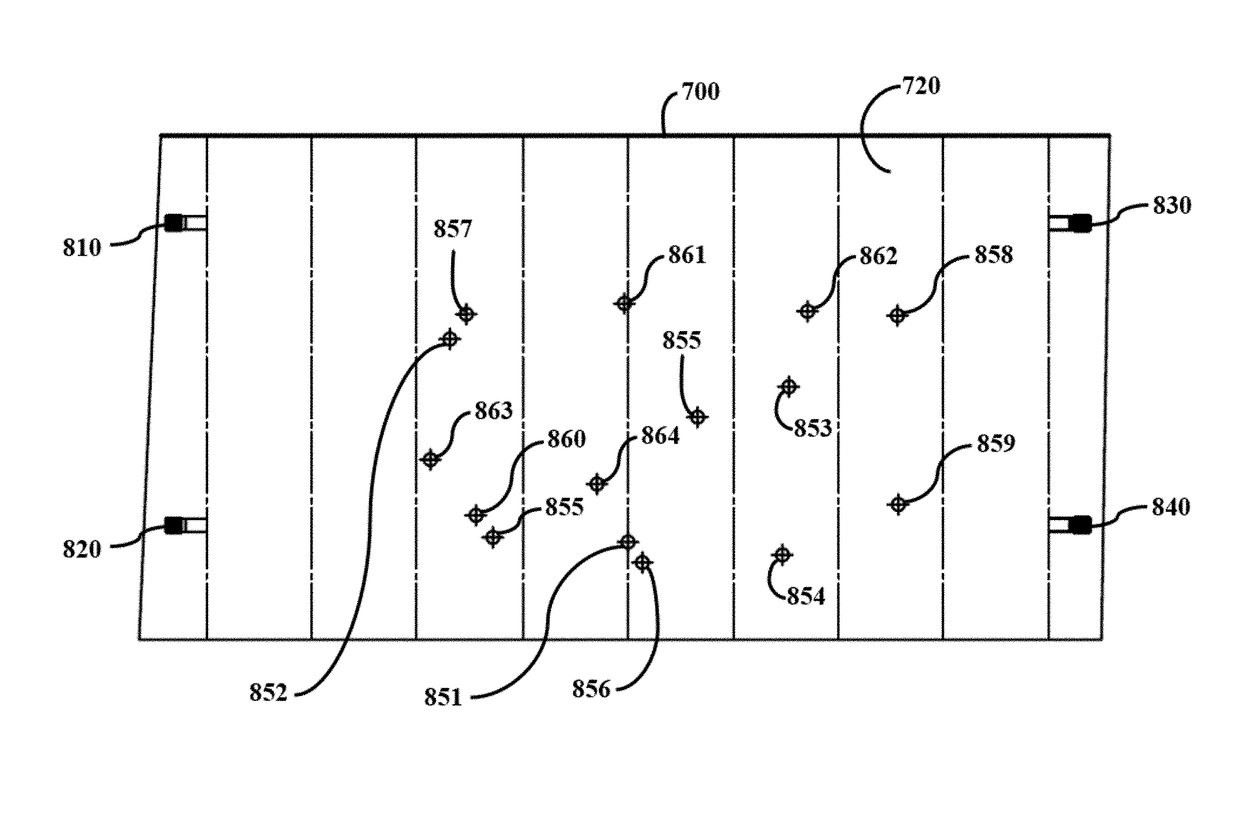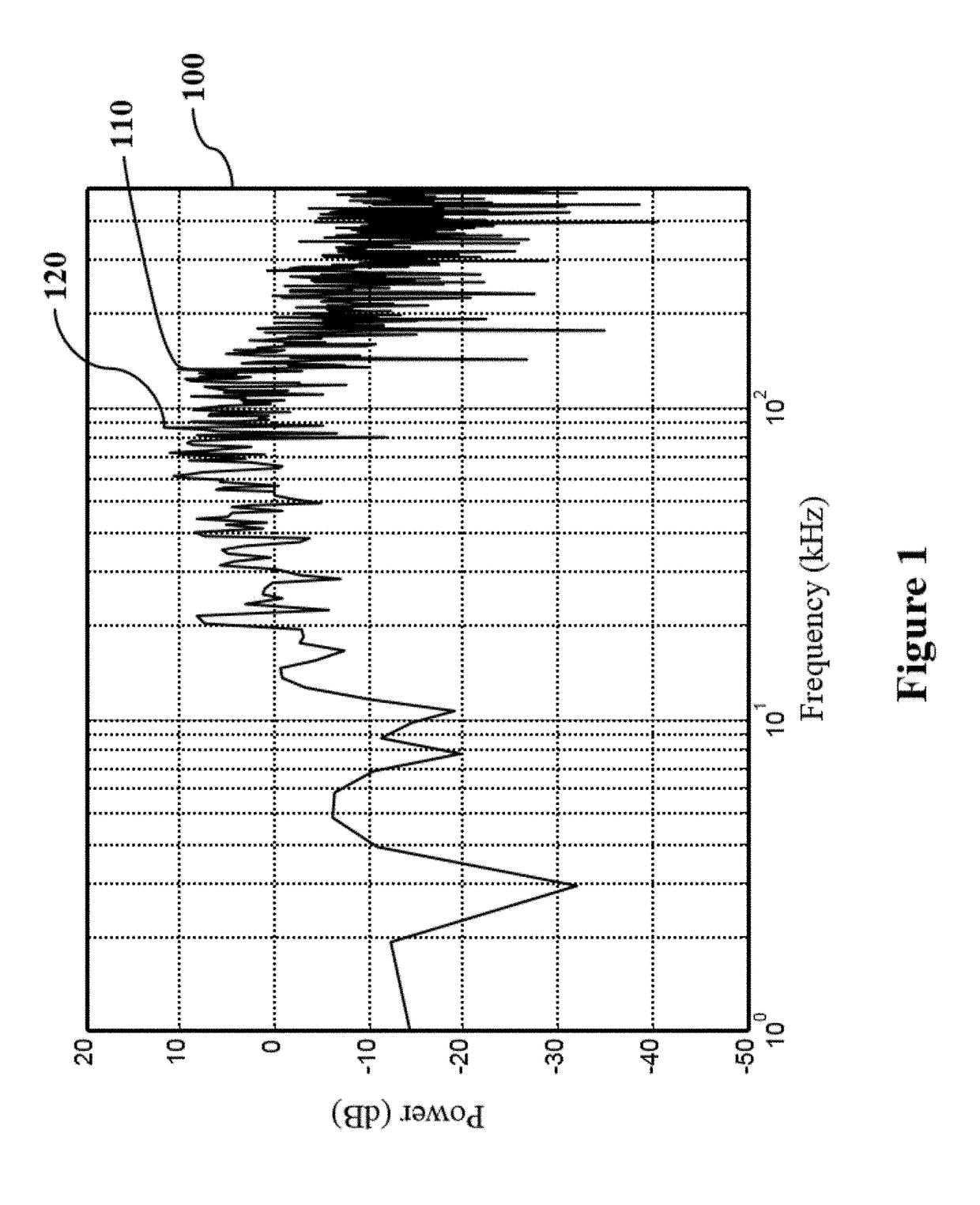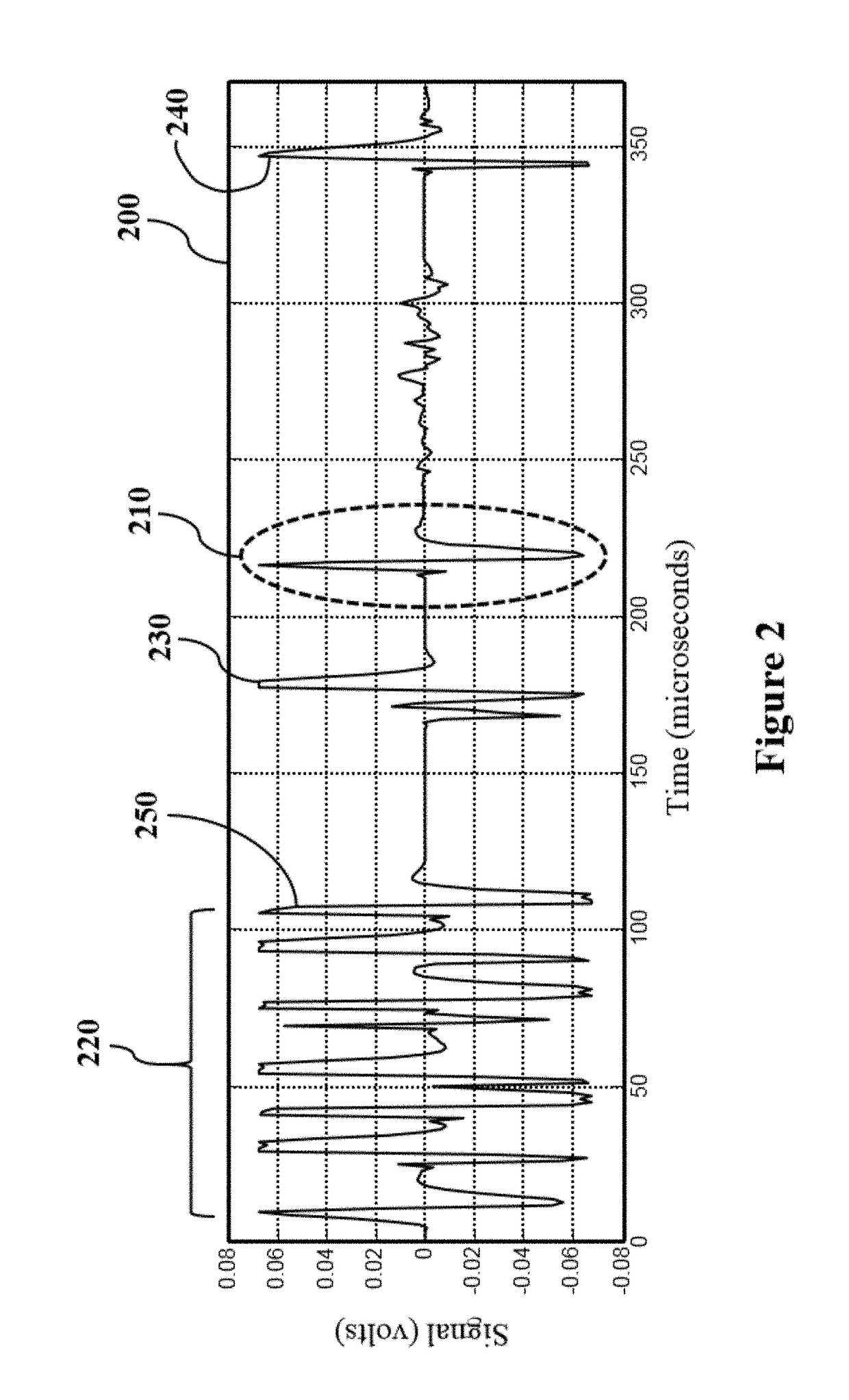System and method for detecting multiple fragments in a target missile
- Summary
- Abstract
- Description
- Claims
- Application Information
AI Technical Summary
Benefits of technology
Problems solved by technology
Method used
Image
Examples
Embodiment Construction
[0026]The detector of the present invention is in the form of a digital signal processing algorithm that operates on digital samples of sensor responses captured by, but not limited to, a WKIPS system. The detector of the present invention reliably detects fragment impacts; functions autonomously; operates on a signal serially in time; does not require multiple passes over the signal samples to produce detections; functions without customization to individual sensors; generates information about the detected impact; and is independent of input signal strength.
Description of the Detector
Theory
[0027]The model of the physics of the situation is built upon the idea of numerous fragments colliding with the target and each providing a signal due to its impact. The recorded signal is the sum of all fragment signals.
[0028]This situation can be compared to a multiuser communication problem. Each fragment's signal is an attempt by a user (fragment) to communicate to a receiver (WKIPS sensor)....
PUM
 Login to View More
Login to View More Abstract
Description
Claims
Application Information
 Login to View More
Login to View More - R&D
- Intellectual Property
- Life Sciences
- Materials
- Tech Scout
- Unparalleled Data Quality
- Higher Quality Content
- 60% Fewer Hallucinations
Browse by: Latest US Patents, China's latest patents, Technical Efficacy Thesaurus, Application Domain, Technology Topic, Popular Technical Reports.
© 2025 PatSnap. All rights reserved.Legal|Privacy policy|Modern Slavery Act Transparency Statement|Sitemap|About US| Contact US: help@patsnap.com



